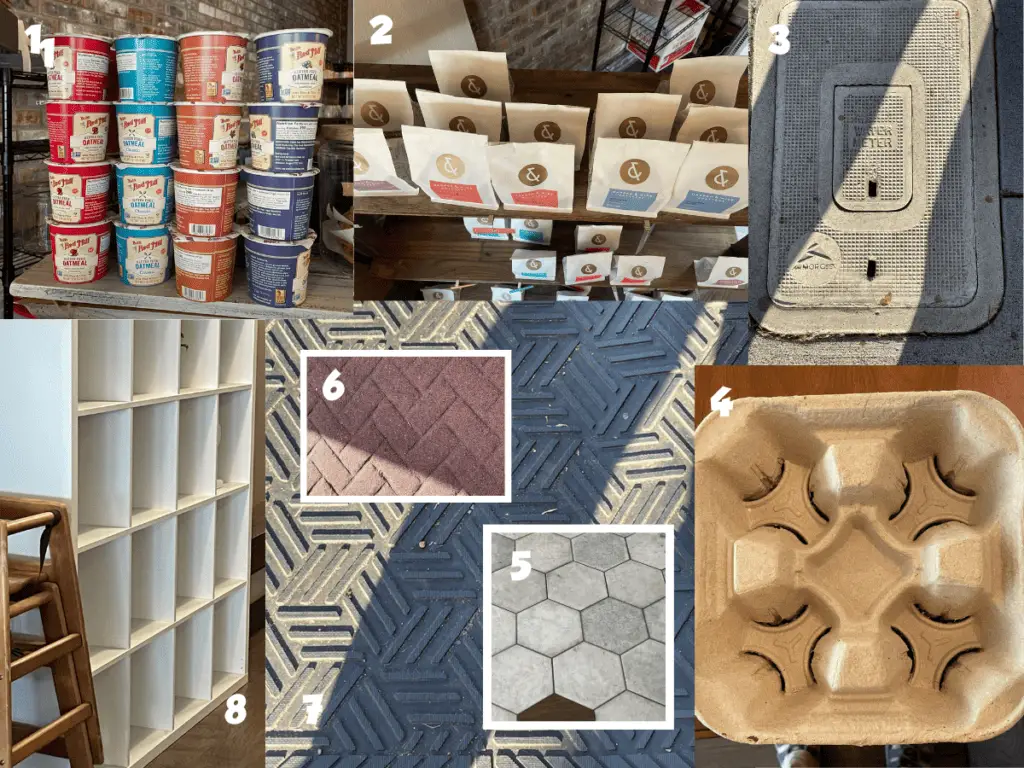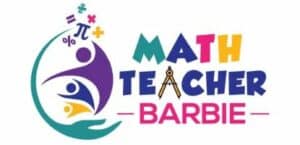Arrays form the basis of one of the most versatile and powerful math tools in late elementary and early algebra. Arrays allow children and adults of all ages and stages to see insights and patterns. Arrays can be colorful and appealing and bring order to a chaotic world. Arrays are all around us every day. Arrays help in counting, ensuring an order and method so that each item is counted exactly and only once. Arrays bridge students from counting to skip counting, an important step in building multiplication fluency. Arrays become important in making use of mathematics in the everyday world, from building computer chips to packing oranges in the most efficient way possible.
This article originally appeared at mathteacherbarbie.com. If you are viewing this on another site, you are viewing a stolen copy.
What is an Array?
In its simplest form, an array is a methodical, regular arrangement of objects. The items are arranged in some geometric, predictable and regular pattern. Arrays may take their form in order to be beautiful, in order to be practical, in order to be countable, or for a myriad other reasons.
In math, when we’re talking about arrays, we’re usually talking about rectangular arrays, especially up through early algebra. In rectangular arrays, the items are arranged in rows and columns that fill up a rectangle. There are a certain number of rows, and each row contains the same number of items, or at least spaces for items. (Thus the same could be said for columns.)
Arrays in preschool
Counting is built on what’s called the the one-to-one principle or the pigeonhole principle. This principle assigns each object in one set (each pigeon for example) to exactly one object in another set (one pigeonhole for example). If we try to fit two pigeons into one pigeonhole, it’s too crowded. If we try to have two holes for one pigeon, we’re wasting holes.
When we count a group of objects, we’re assigning one number word to each object. In English, one is assigned to the first object, two is assigned to the second object, and so forth. Each object gets assigned to a unique number word, and each object goes with only one number word. If we count correctly, the final number word we say is the number of objects we have.
In order to count correctly, though, it’s very important that each number word goes to exactly one object and each object gets exactly one number word. When we accidentally skip an object, skip a number word, or repeat or double-count one of them, then our counting is messed up.
Preschoolers love to use every sense they can to explore their world and learn about patterns.
Arrays can bring order and method to counting while allowing preschoolers to arrange, touch, and visualize when counting. They can move methodically through an array, touching each object as they count it, or coloring it as they count it, or dropping an item or taking it out as they count it. Arrays can help preschoolers learn to be methodical in their counting, to avoid double-counting or skipping objects. Yet, the arrays still allow preschoolers to use all of their senses as well as their vast creativity to determine both what order to count the objects in (it might not be left-to-right, top-to-bottom) and how to keep track of where they are.
Using a variety of arrays also allows preschoolers to begin to associate the number words with their abstract meanings, not just as a string of meaningless syllables that the grown-ups keep asking them to repeat. Frequent counting with different arrays also helps them develop a sense of the “bigness” of different numbers. Both of these are core numeracy skills and intuitions.
So grab a muffin tin and a pile of small toys and get to sorting those toys into an array.
Arrays in early elementary
Rectangular arrays in early elementary extend the intuition building of the preschool years. Rectangular arrays also create a concrete way to bridge from pigeonhole counting into skip-counting and adding.
Rectangular arrays will be visible all throughout a child’s day at school, from the arrangement of colorful “sitting spots” on the floor to the floor and ceiling tiles to students lining up to go to the cafeteria.
My post Using Arrays to Teach Multiplication shares a lot of ideas about how to encourage early elementary students through the progression from haphazard counting to multiplication using arrays. In summary, it discusses the simple and playful method of asking “how many?” when an array is encountered, and allowing the child to explore and name all sorts of ways of counting (and you may be surprised at what they find to count too!)
In addition to these basic numeracy and arithmetic skills, though, regular exposure to rectangular arrays forms a basis for children to fall back on when faced in later grades (and life in general) with graphs and other pictoral representations of data. Recognizing regularity, using regularity to view differences, and attention to small changes and small details all grow out of this type of “how many” activity. All critical skills in our data-driven, information-centric, statistics-heavy society.
Arrays in later elementary
In mid- and upper elementary, there is less emphasis on arrays. However, a powerful tool introduced around the time of multiplication is the area model. As it happens, one way to think of an area model is an invisible array, where the only part of the array you can actually see is the boundary rectangle.
The area model works because rectangles of a certain length and width can be filled perfectly with little squares in rows and columns, where the number of rows is the width and the number of columns is the length. We call the number of those little squares the total area of the rectangle: the number of square units that fit inside of it.
Thus the area model is simply an abstraction of rectangular arrays. In fact, the whole geometric concept of area can be introduced using arrays in this manner.
However, that doesn’t mean arrays are completely abandoned in later elementary, though rectangular arrays may (or may not) be starting to get boring from a mathematical perspective. Yet, they do remain useful for reasons of beauty or practicality or both. Arranging cookies on a baking sheet, lining up, and playing certain card games all use (usually) rectangular arrays in practical ways.
Students can still gain intuition and insights from observing, drawing, discussing, and creating a variety of arrays in other shapes. By playing with alternating-row arrays, such as those found in efficiently packing round objects, students might develop number patterning and addition insights. In playing with circular or polygonal arrays, as one might find in stained glass windows or mandalas, students gain important geometric intuitions and build powerful creative tools within themselves at the same time. There are a wide variety of arrays and patterns that continue to build numeracy, fluency, and flexibility throughout ones lifetime.
Arrays in algebra
Unlike elementary school, arrays don’t play such a critical role in understanding algebra (with the exception of the area model), but rather become useful in performing algebra. Arranging algebraic structures into regular, methodical patterns help algebra students see the structures within the problem at hand. Lining up like terms vertically, or structuring a worked solution line by line can help the student see what comes next and the teacher see the student’s thinking at each step.
Array-inspired intuition also comes into play when students graph in algebra. We see array structures when we line up $(x,y)$ coordinates in a table of values. We could even think of the $xy$-coordinate plane itself as an infinite abstraction of a rectangular array, with a defined center instead of a defined boundary. Imagine how much easier plotting a point would seem to a student who learned in elementary to describe where in an array a particular object was by the row and column it is in.
Arrays in research and industry
Arrays are all around us, surrounding us with beauty, with order, and with efficiency. Once you start looking, they’re impossible to avoid.
Though perhaps not all formally arrays, array-style repetition can be found throughout the arts in painting, music (fugues for example), dance, poetry, and many others. Some artists consciously use structure of this type, some never realize the mathematics underlying.
In cities, large buildings and roads tend to be laid out in regular, rectangular patterns, giving an order and predictability for those finding their way around.
As for efficiency, there is an entire research area in mathematics called packing problems, which examines the optimal way to pack items for transport or storage, minimizing space, materials, or other means. Much of the inspiration for this arises from nature, such structures as beehives and ice crystals.
Arrays are everywhere. And they are powerful, both as tools for learning mathematical patterns as well as living in the world. Look around, and when you spot one, ask yourself and your children of all ages: “How many?”

1 and 2: Arranging retail items in arrays allows customers to see quickly what options there are and workers to see quickly what inventory is running low.
3: Textures on roadway and sidewalk hole covers provide a level of slip resistance on rainy days. Distinctive array-like patterns lend aesthetics, brand-recognition, and advantages in mass production.
4: This beverage carrier provides an abundance of arrays and opportunities. This is a great option to ask the simple question “How many?” and see how many different answers your family can notice.
5, 6, and 7: Non-rectangular arrays in flooring and sidewalks brings a pleasant variety and visual interest to a space.
8: A shelf in rectangular array makes it easy to assemble, disassemble, and move as well as to describe which shelf to look on to find the item needed (“top right” or “third from bottom” for example)
You’ve Got This!
